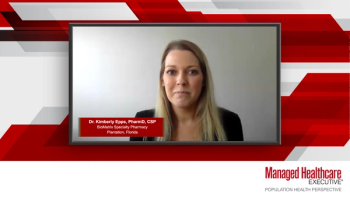
Challenges and Opportunities in the Hemophilia A Space – Insights into the Patient Perspective


Diverse factors can influence treatment decisions for patients with hemophilia A, such as the evolving landscape of insurance coverage, challenges related to vein access and medication storage, and mode of administration.

Counseling for patients with hemophilia A should include medication storage requirements, the importance of maintaining sterile injections, and administration considerations, such as how to use blunt fill needles.

Ensuring that patients with hemophilia A have the necessary injection supplies, appropriately-sized syringes, and access to tracking tools can help to foster treatment adherence.

Recognizing the significance of patient comfort, familiarity with treatment, and established support networks is crucial for adherence if treatment switches are needed.

Specialty pharmacies can help patients with hemophilia A maintain hemostasis and ensure patient safety through medication therapy management, utilizing regional care coordinators and direct pharmacist outreach, and by maintaining consistent provider communication.

Specialty pharmacies prioritize minimizing drug waste in hemophilia A treatment, aiming for near-complete dosing while adhering to payer limits and addressing potential drug hoarding among patients.

Hematologist Jonathan Roberts, MD, discusses the history and challenges of hemophilia A treatment.

The challenges associated with treating hemophilia A become increasingly complex with varying disease severity.

Treatment initiation and management of comorbidities pose challenges for both pediatric and older adult patients with hemophilia A.

Patients with hemophilia A face challenges with finding a lifestyle-appropriate therapy that considers self-infusion skills, management of breakthrough bleeds, and access to bleeding disorder centers.

Lifelong prophylaxis requires pharmacokinetic profiling, monitoring of factor VIII levels, and adjustments at different stages of life.

Inhibitor development in hemophilia can drastically impact treatment decisions but their burden can be managed.

The evolving hemophilia treatment landscape necessitates informed discussions around patient-centered therapy choices that consider patient lifestyle, treatment goals, and thrombotic risks.

The potential benefits and uncertainties surrounding gene therapy include its curative potential, the need for immunosuppression, ongoing care needs, and a lack of long-term data.

As more therapeutic options become available, individualizing treatment for hemophilia A becomes increasingly important.



